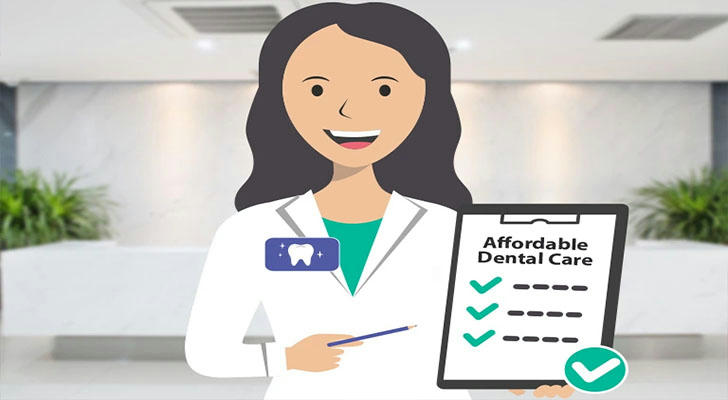How to Find Affordable Dental Care Options in America
Dental care is an essential part of overall health, but the cost of dental services can be a significant barrier for many Americans. Without adequate coverage or financial resources, accessing routine check-ups, cleanings, and necessary treatments can become challenging. Fortunately, there are multiple avenues to find affordable dental care in the United States. This article provides a detailed guide on how to navigate these options effectively, helping you maintain your oral health without excessive financial strain.

Understanding the Cost of Dental Care in the U.S.
Dental care costs in the U.S. vary widely depending on the type of service, geographic location, and whether the provider accepts insurance. Routine preventive services like exams and cleanings are generally less expensive than restorative or emergency procedures such as fillings, root canals, or crowns. According to recent data, dental insurance premiums and out-of-pocket expenses can add up, making it important to explore cost-saving options.
1. Explore Dental Insurance Plans
Dental insurance is one of the most common ways to manage dental expenses. Many Americans obtain dental coverage through their employers, but individual plans are also available through the Health Insurance Marketplace and private insurers.
In 2025, dental plans offered via marketplaces such as Covered California provide options including Dental Health Maintenance Organization (DHMO) and Dental Preferred Provider Organization (DPPO) plans. These plans vary in cost, coverage, and provider networks. For example, some plans cover two exams, two cleanings, and X-rays annually, while others offer additional benefits like orthodontic coverage or major dental work at reduced rates.
When choosing a dental insurance plan, consider:
- Monthly premiums and deductibles
- Coverage limits and co-pays for common procedures
- Network of participating dentists
- Whether preventive care is covered at low or no out-of-pocket cost
Comparing plans carefully can help you select one that balances affordability with the coverage you need.
2. Utilize Dental Savings Plans
Dental savings plans are an alternative to traditional insurance. Instead of paying premiums, members pay a yearly fee to access discounted rates on dental services from participating providers. These plans often cover a wide range of treatments, including cleanings, fillings, crowns, and orthodontics, at reduced costs.
Dental savings plans can be particularly beneficial for individuals or families without dental insurance or those who require services not fully covered by their insurance. They also eliminate the complexities of claims and waiting periods associated with insurance.
3. Visit Federally Qualified Health Centers (FQHCs)
Federally Qualified Health Centers offer dental services on a sliding fee scale based on income. These centers serve underserved communities and provide care regardless of insurance status. FQHCs are especially valuable for individuals living in rural or low-income areas where dental providers may be scarce.
You can locate the nearest FQHC through online directories or state health department resources. Services typically include preventive care, fillings, extractions, and sometimes more advanced treatments.
4. Consider Dental Schools for Reduced-Cost Care
Dental schools operate clinics where dental students provide care under the supervision of licensed dentists. These clinics offer many services at significantly reduced prices, often charging only for materials and supplies.
While appointments may take longer due to the educational setting, dental school clinics are an excellent option for affordable care, including cleanings, exams, and restorative procedures.
5. Look into Government Programs for Children and Adults
Programs like Medicaid and the Children’s Health Insurance Program (CHIP) provide dental coverage for eligible low-income children and adults. Coverage varies by state but often includes preventive and restorative services.
For example, California’s Medi-Cal Dental program offers dental care to eligible individuals, including exams, cleanings, fluoride treatments, fillings, and orthodontics for qualifying children. Many states have similar programs with varying benefits.
Eligibility and enrollment processes differ by state, so checking with your local Medicaid office or health department is important to understand available benefits.

6. Seek Out Community and Nonprofit Dental Events
Nonprofit organizations and dental associations frequently organize community dental events offering screenings, cleanings, and other services at reduced prices. Programs like America’s Dentists Care Foundation and Give Kids A Smile provide access to care through volunteer dentists.
These events are often held periodically and can be found through local health departments, dental societies, or online community calendars.
7. Negotiate Payment Plans with Your Dentist
If you have a regular dentist but face difficulty affording treatment, discuss payment options. Many dental offices offer flexible payment plans that allow patients to spread out costs over time, making care more manageable.
Some dentists may also provide discounts for upfront payments or for patients without insurance. Open communication about financial concerns can lead to workable solutions.
8. Use Tele-dentistry Services for Consultations
Tele-dentistry has grown as a convenient way to receive dental consultations remotely. While not a substitute for in-person procedures, tele-dentistry can help with initial assessments, follow-up visits, and advice, potentially reducing the need for costly office visits.
Some dental plans include tele-dentistry benefits, which may help lower overall expenses.
9. Maintain Preventive Care at Home
The best way to reduce dental costs is to prevent problems before they start. Regular brushing, flossing, and a healthy diet contribute significantly to oral health. Avoiding tobacco and limiting sugary foods can also reduce the risk of cavities and gum disease.
By staying proactive with daily care, you can minimize the need for expensive treatments.
10. Research Local Resources and Assistance Programs
Many states and municipalities offer additional dental assistance programs tailored to their populations. These programs may provide vouchers, subsidies, or referrals to affordable providers.
Checking with local health departments, social service agencies, and dental societies can uncover resources specific to your area.

Conclusion
Finding affordable dental care in America requires exploring multiple options and understanding the resources available. Dental insurance, savings plans, federally qualified health centers, dental schools, and government programs all play important roles in making dental services accessible.
By researching and utilizing these avenues, individuals and families can maintain their oral health without undue financial burden. Regular dental care is a vital component of overall well-being, and taking steps to access affordable services ensures a healthier smile for years to come.
